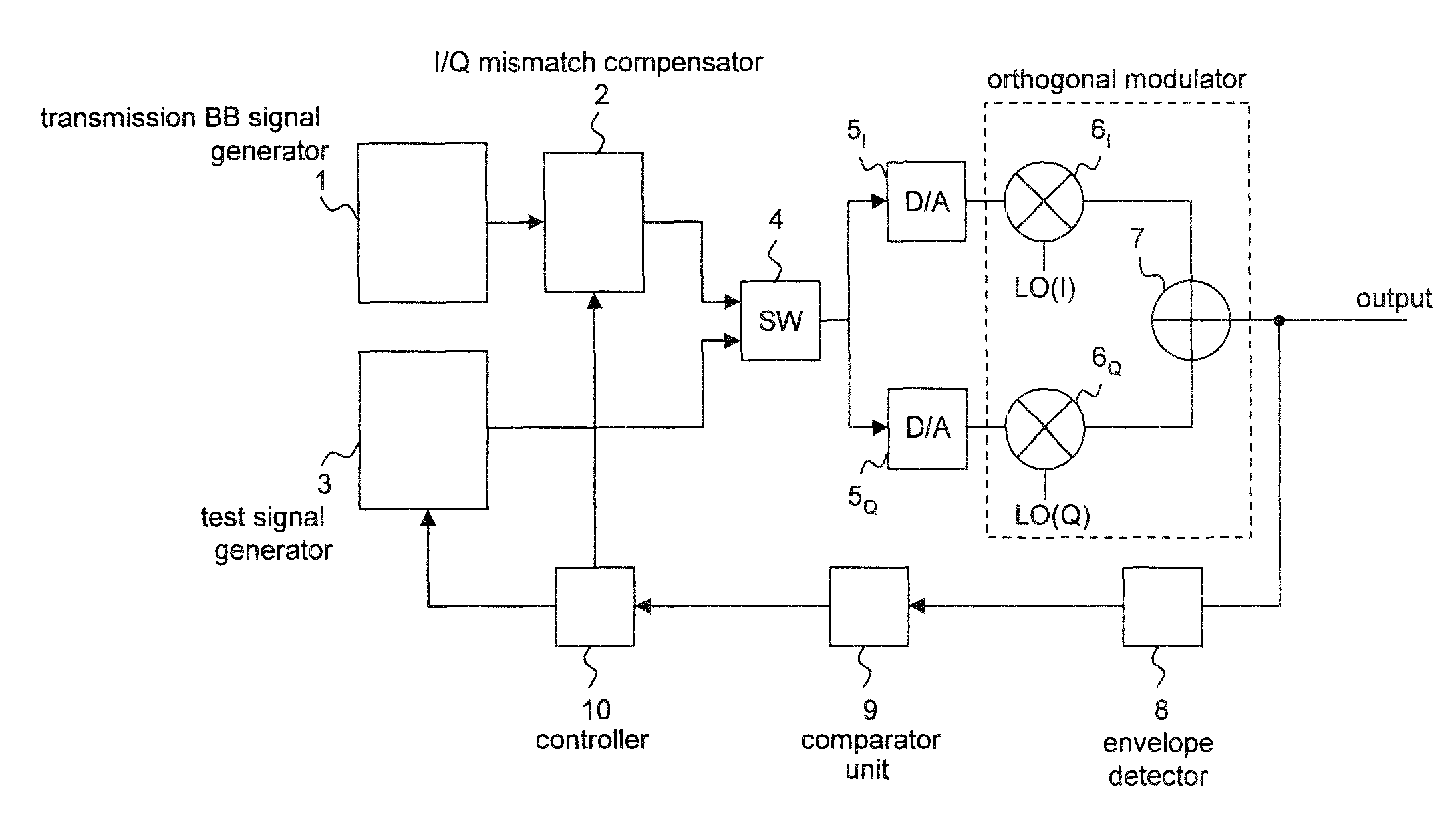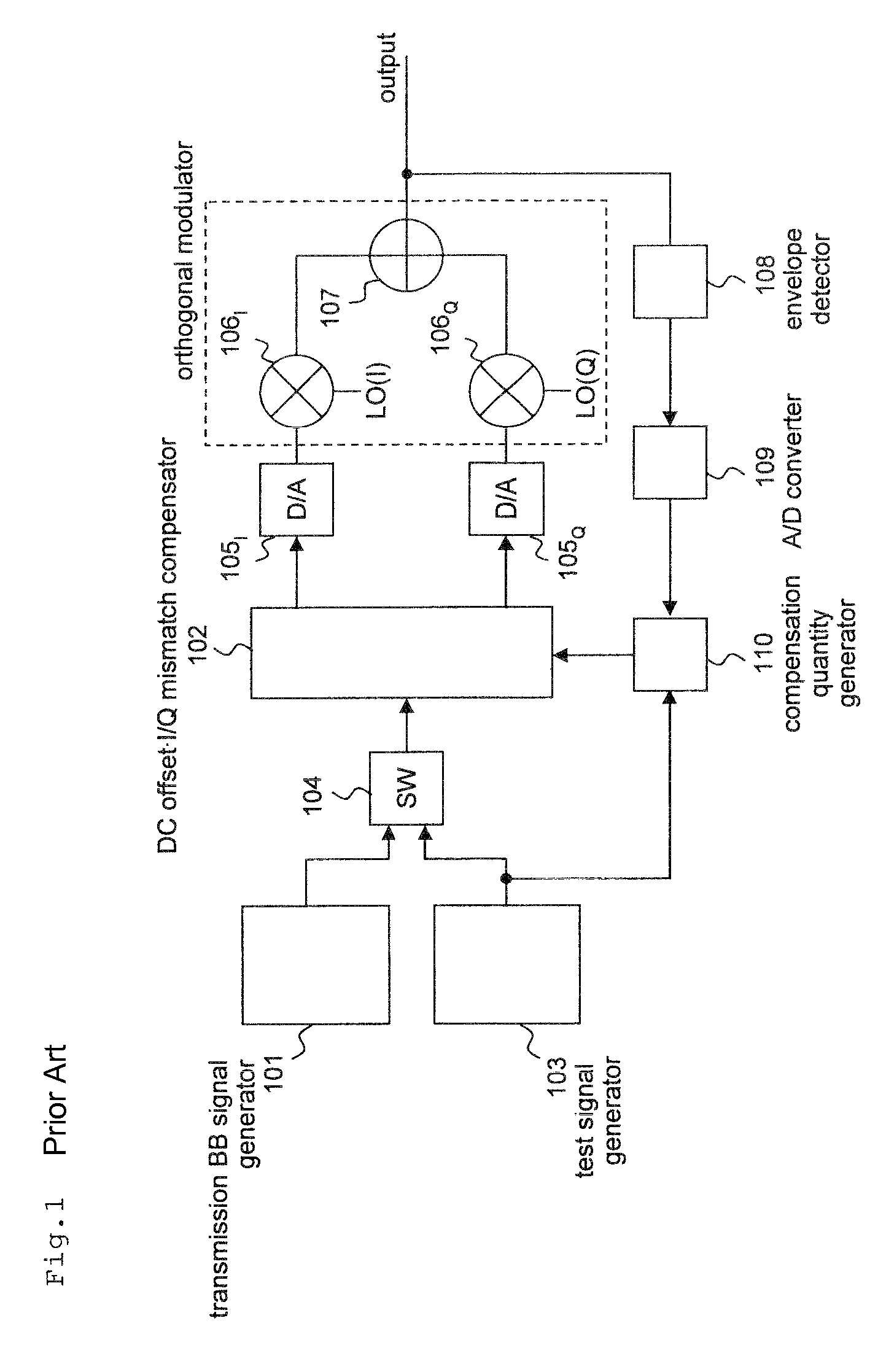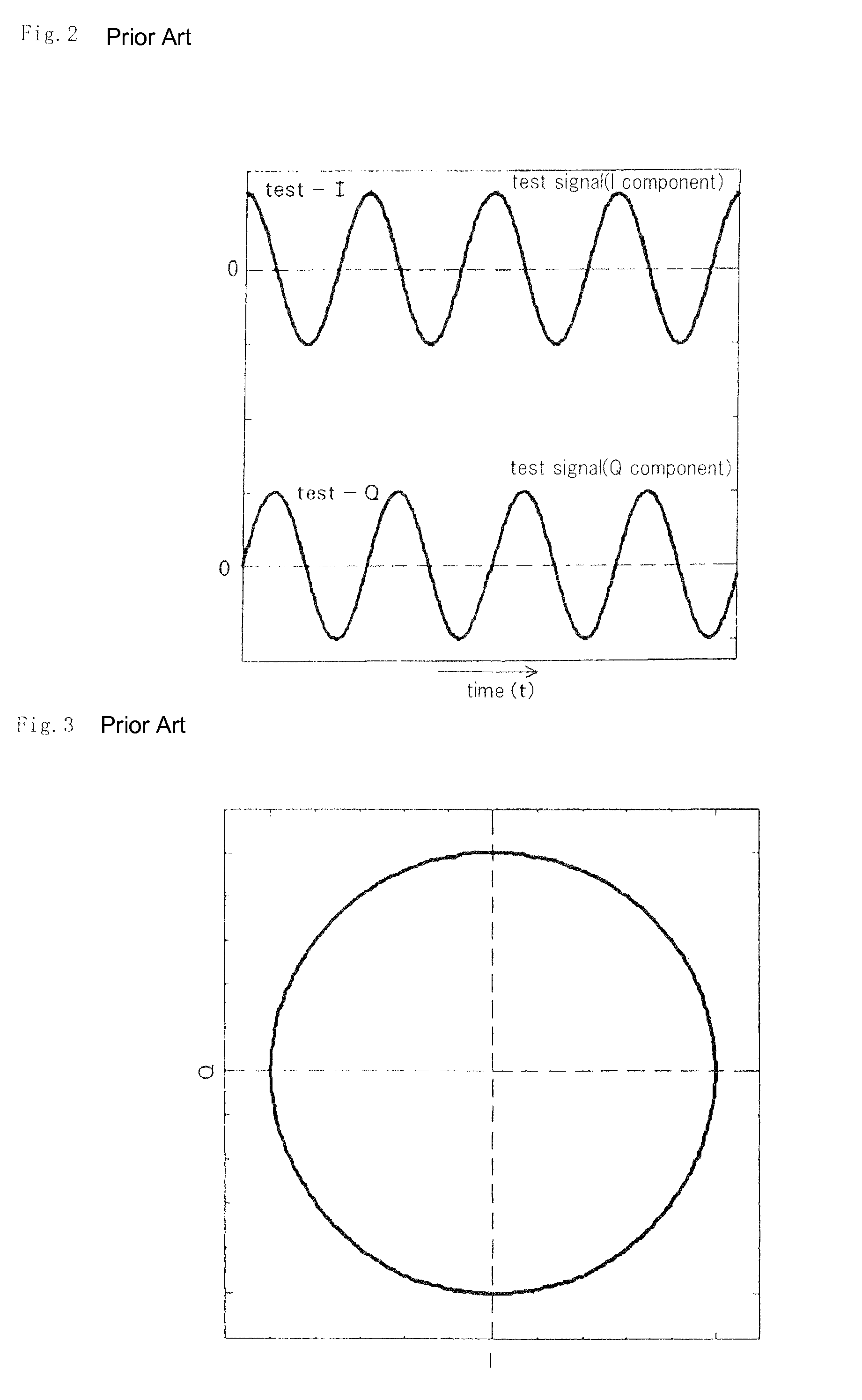Signal processing circuit
a signal processing circuit and circuit technology, applied in the direction of pulse technique, transmission monitoring, line-fault/interference reduction, etc., can solve the problems of almost no hardware to be added for compensation, the above performance requirements are lowered, and the arrangement of the signal processing circuit is prevented from being complex
- Summary
- Abstract
- Description
- Claims
- Application Information
AI Technical Summary
Benefits of technology
Problems solved by technology
Method used
Image
Examples
1st exemplary embodiment
[0105]FIG. 9 is a block diagram showing the overall arrangement of a signal processing circuit according to a first exemplary embodiment of the present invention.
[0106]As shown in FIG. 9, the signal processing circuit according to the present exemplary embodiment comprises transmission BB (BaseBand) signal generator 1, I / Q mismatch compensator 2, test signal generator 3, switch 4, D / A converters 5I, 5Q, mixers 6I, 6Q, adder 7, envelope detector 8, comparator unit 9, and controller 10.
[0107]Transmission BB signal generator 1 generates a transmission baseband signal in a transmitting process.
[0108]In a compensating process, a compensation quantity for compensating for an I / Q mismatch of an orthogonal modulator is set in I / Q mismatch compensator 2 by controller 10. In the transmitting process, I / Q mismatch compensator 2 corrects the transmission baseband signal generated by transmission BB signal generator 1 based on the compensation quantity set by controller 10.
[0109]In the compensat...
PUM
 Login to View More
Login to View More Abstract
Description
Claims
Application Information
 Login to View More
Login to View More - R&D
- Intellectual Property
- Life Sciences
- Materials
- Tech Scout
- Unparalleled Data Quality
- Higher Quality Content
- 60% Fewer Hallucinations
Browse by: Latest US Patents, China's latest patents, Technical Efficacy Thesaurus, Application Domain, Technology Topic, Popular Technical Reports.
© 2025 PatSnap. All rights reserved.Legal|Privacy policy|Modern Slavery Act Transparency Statement|Sitemap|About US| Contact US: help@patsnap.com



